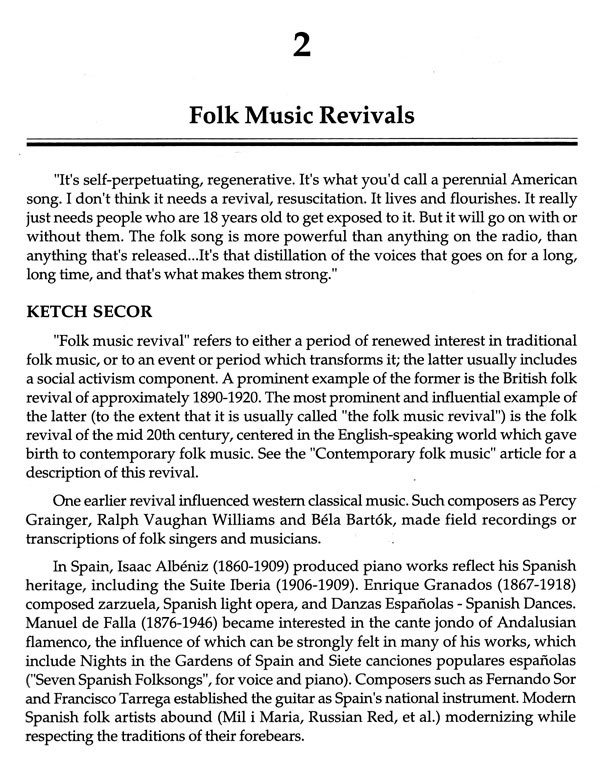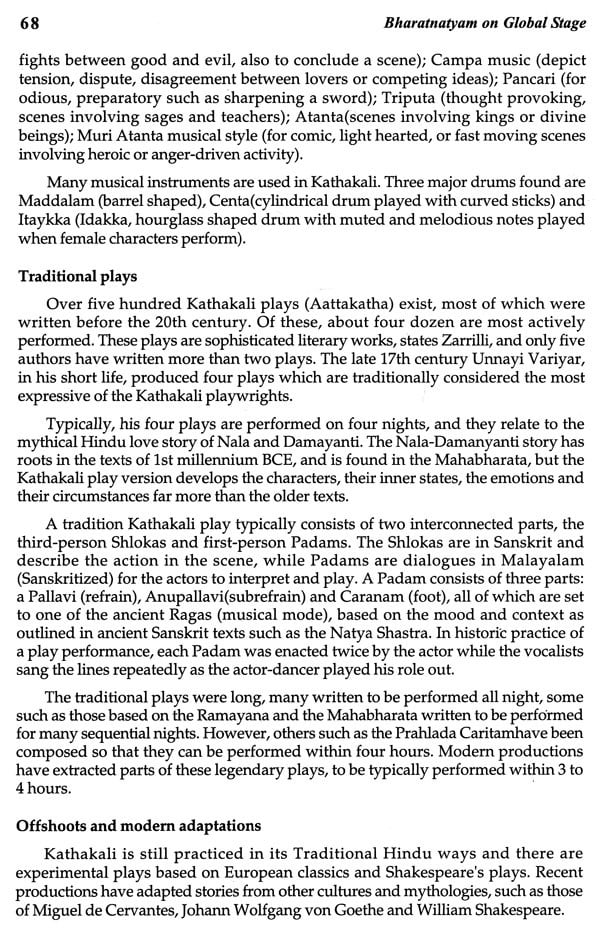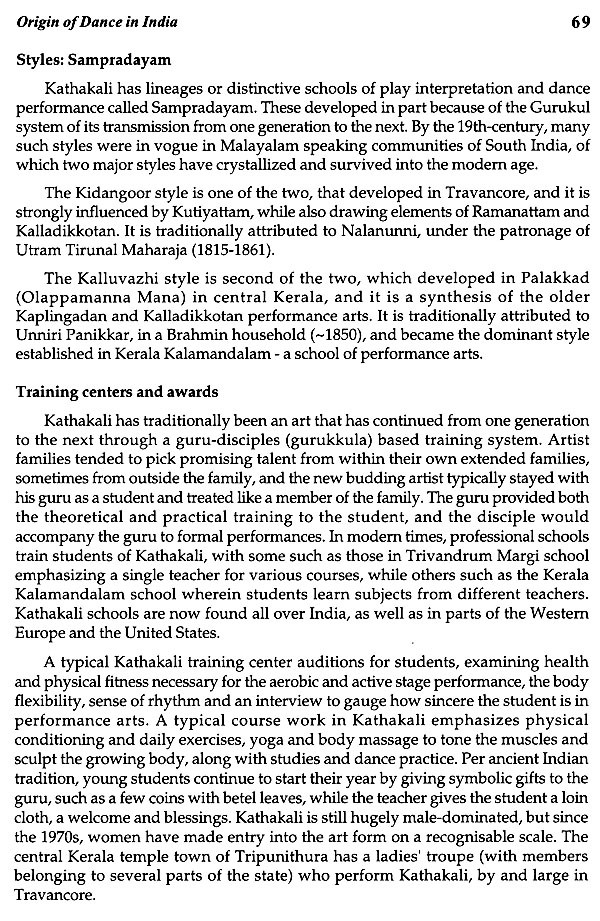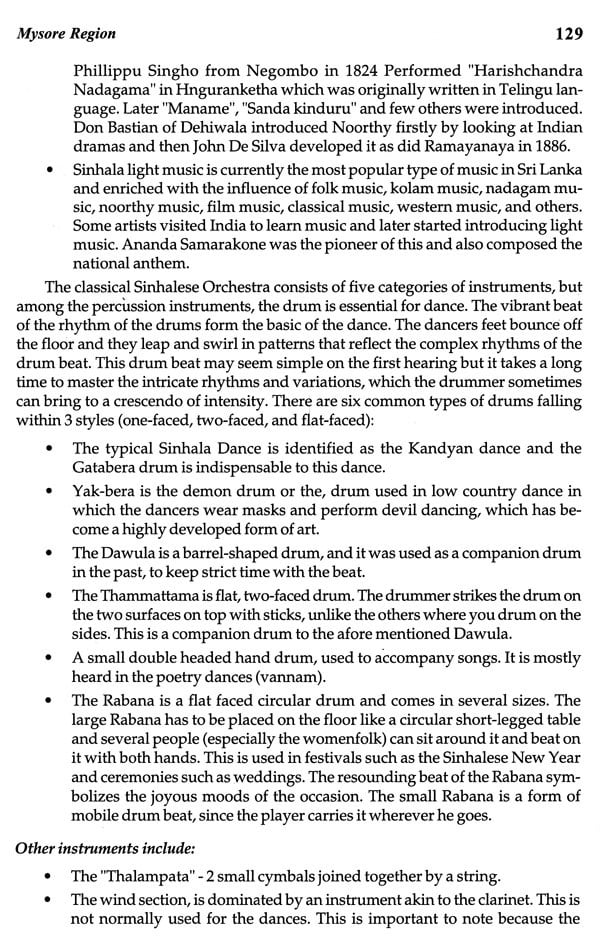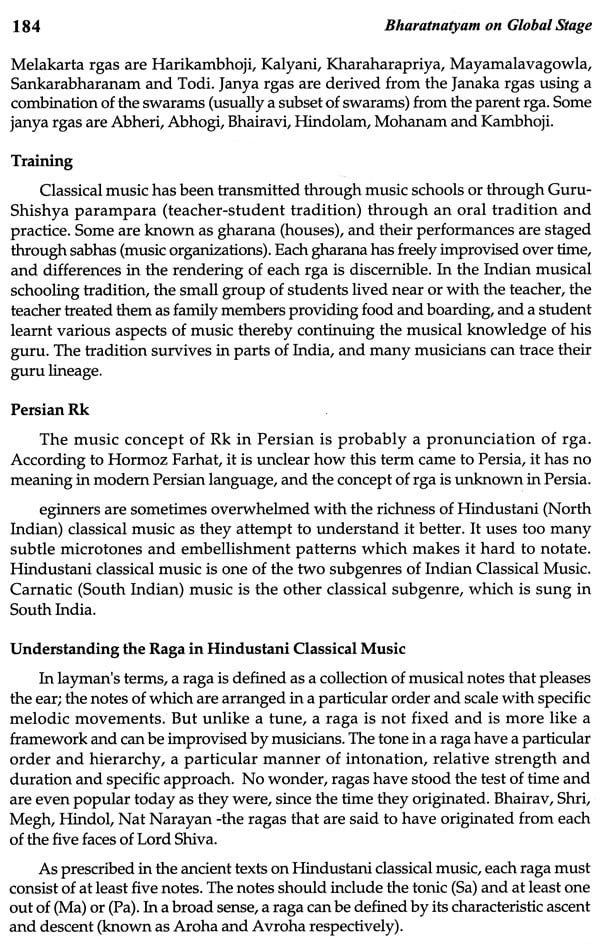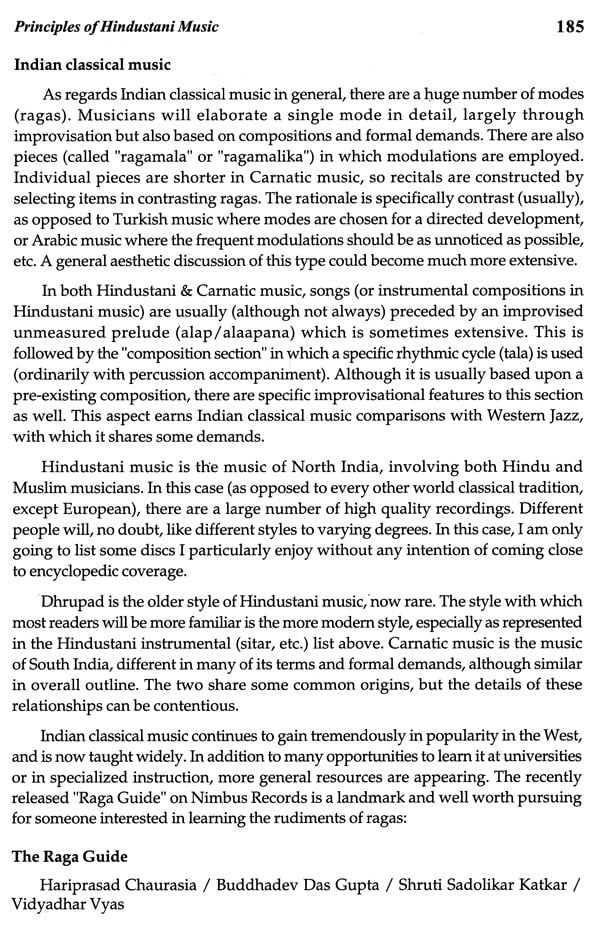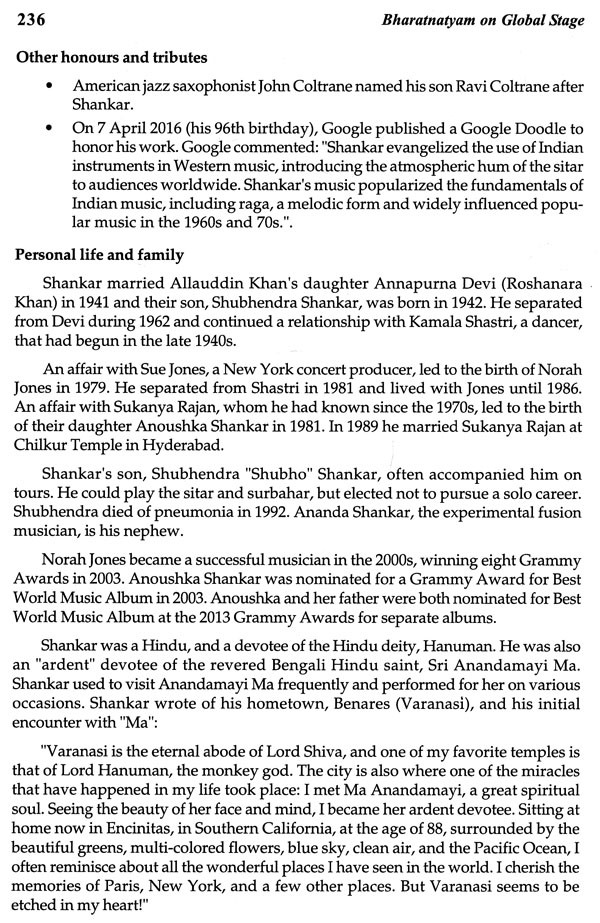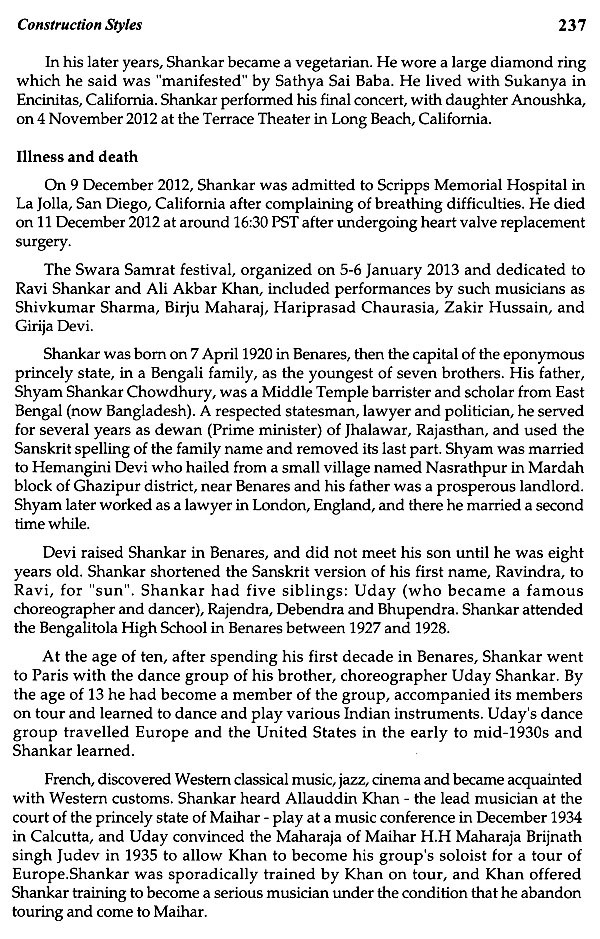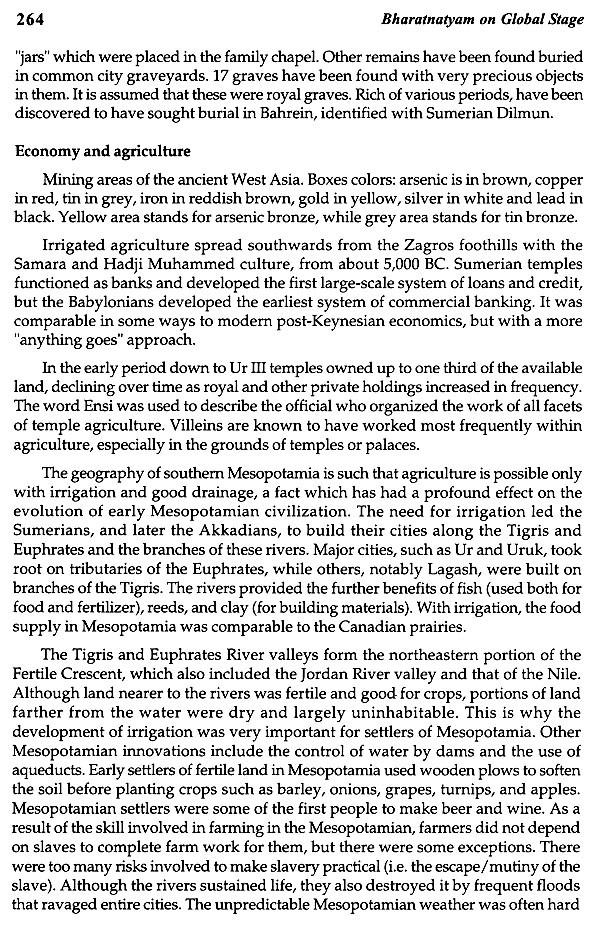
Bharatnatyam on Global Stage
Book Specification
| Item Code: | UAR668 |
| Author: | Jagmohan Singh |
| Publisher: | Edukeen Publisher |
| Language: | English |
| Edition: | 2019 |
| ISBN: | 9789389387001 |
| Pages: | 280 |
| Cover: | HARDCOVER |
| Other Details | 9.50 X 6.50 inch |
| Weight | 550 gm |
Book Description
Bharatanatyam's theoretical foundations trace to the ancient Sanskrit text by Bharata Muni, Natya Shastra, its existence by 2nd century CE is noted in the ancient Tamil epic Silappatikaram, while temple sculptures of 6th to 9th century CE suggest it was a well refined performance art by the mid 1st millennium CE. Bharatanatyam may be the oldest classical dance tradition of India.
Bharatanatyam style is noted for its fixed upper torso, legs bent or knees flexed out combined with spectacular footwork, a sophisticated vocabulary of sign language based on gestures of hands, eyes and face muscles. The dance is accompanied by music and a singer, and typically her guru is present as the director and conductor of the performance and art. The dance has traditionally been a form of an interpretive narration of mythical legends and spiritual ideas from the Hindu texts. The performance repertoire of Bharatanatyam, like other classical dances, includes nrita (pure dance), nritya (solo expressive dance) and natya (group dramatic dance).
Jagmohan Singh was born in January 12, 1954 in Agra. He did M.A in History and Political Science from Agra University, also did M.ED from Punjab University and has deep knowledge of Classical Dance. His books and stories have been best sellers in different states even his work translated into 50 regional languages and selling thousands of copies. His work has received numerous recommendation, he said that writing Dancing articles had been a healing act. He had enjoyed writing Dance more than any other.
Bharatanatyam, a pre-eminent Indian classical dance form presumably the oldest classical dance heritage of India is regarded as mother of many other Indian classical dance forms. Conventionally a solo dance performed only by women, it initiated in the Hindu temples of Tamil Nadu and eventually flourished in South India. Theoretical base of this form traces back to 'Natya Shastra', the ancient Sanskrit Hindu text on the performing arts. A form of illustrative anecdote of Hindu religious themes and spiritual ideas emoted by dancer with excellent footwork and impressive gestures its performance repertoire includes nrita, nritya and natya. Accompanists include a singer, music and particularly the guru who directs and conducts the performance. It also continues to inspire several art forms including paintings and sculptures starting from the spectacular 6th to 9th century CE temple sculptures.
The four Nattuvanars namely Ponaiyah, Vadivelu, Sivanandam and Chinnaiya who are renowned as Tanjaore Bandhu and who thrived in the Durbar of Maratha ruler, Sarfoji-II from 1798 to 1832 shaped up the modern day Bharatanatyam. Meenakshi Sundaram Pillai, a dance guru from the village of Pandanallur was a noted exponent of Bharatanatyam who is predominantly known for his style referred as the Pandanallur school of Bharatanatyam. One of his students Rukmini Devi championed and performed the Pandanallur (Kalakshetra) style and also remained one of the leading proponents of the classical dance revival movement. Balasarswati who was regarded as child prodigy by Vidhwans and Pandits also joined hands in reviving the dance form. She was a virtuoso of the Thanjavur style of Bharatanatyam. Other imminent Bharatanatyam artists include Mrinalini Sarabhai, her daughter Mallika Sarabhai, Padma Subramanyam, Alarmel Valli, Yamini Krishnamurthy and Anita Ratnam among others.
Bharatanatyam (Tamil) originally known as Sathiraattam(), is a major genre of Indian classical dance that originated in Tamil Nadu. Traditionally, Bharatanatyam has been a solo dance performed exclusively by women, and it expressed South Indian religious themes and spiritual ideas, particularly of Shaivism, Vaishnavism and Shaktism.
Bharatanatyam's theoretical foundations trace to the ancient Sanskrit text by Bharata Muni, Natya Shastra, its existence by 2nd century CE is noted in the ancient Tamil epic Silappatikaram, while temple sculptures of 6th to 9th century CE suggest it was a well refined performance art by the mid 1st millennium CE. Bharatanatyam may be the oldest classical dance tradition of India.
Bharatanatyam style is noted for its fixed upper torso, legs bent or knees flexed out combined with spectacular footwork, a sophisticated vocabulary of sign language based on gestures of hands, eyes and face muscles. The dance is accompanied by music and a singer, and typically her guru is present as the director and conductor of the performance and art. The dance has traditionally been a form of an interpretive narration of mythical legends and spiritual ideas from the Hindu texts. The performance repertoire of Bharatanatyam, like other classical dances, includes nrita (pure dance), nritya (solo expressive dance) and natya (group dramatic dance).
Bharatanatyam remained exclusive to Hindu temples through the 19th century. It was banned by the colonial British government in 1910, but the Indian community protested against the ban and expanded it outside the temples in the 20th century. Modern stage productions of Bharatanatyam have incorporated technical performances, pure dance based on non-religious ideas and fusion themes.
**Contents and Sample Pages**


